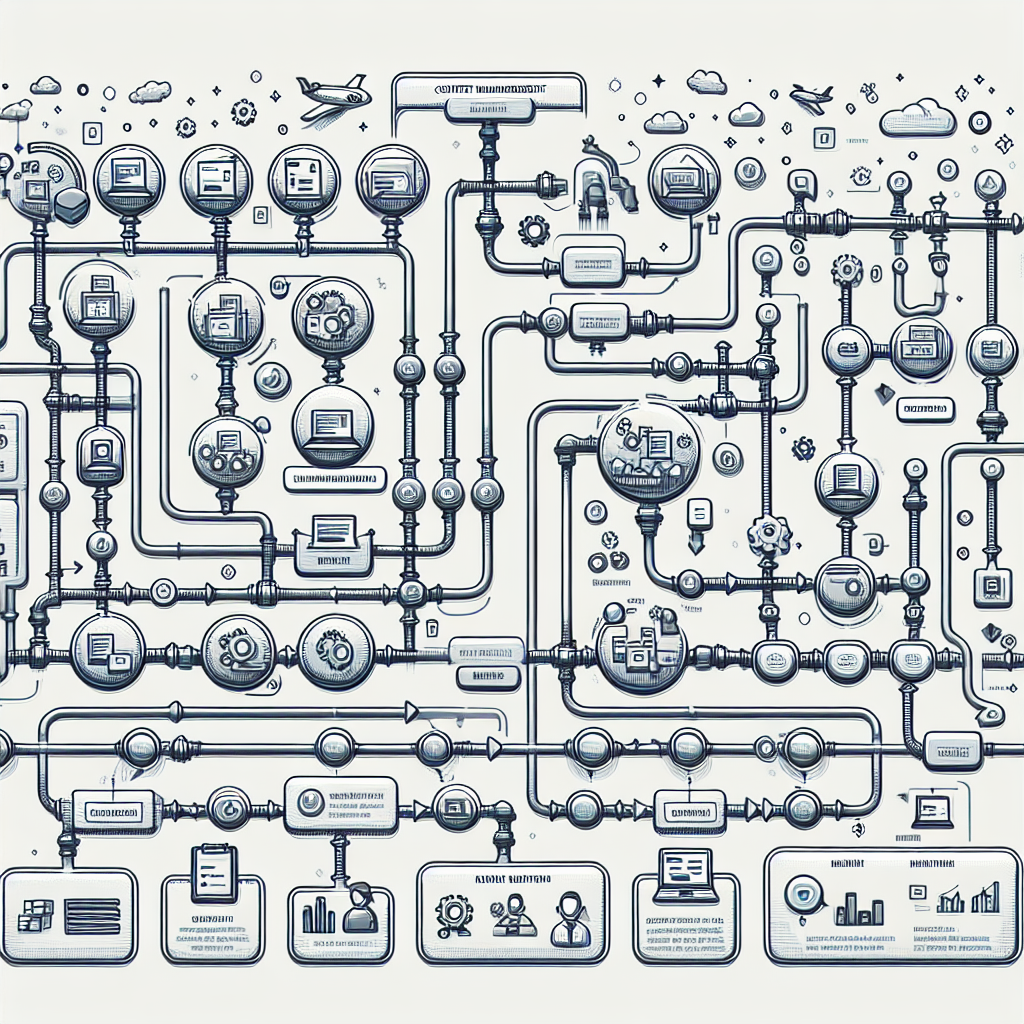
Introduction
In the rapidly evolving landscape of digital media, the terms “content pipelines” and “content workflows” are gaining significant traction. Both concepts play crucial roles in efficiently managing and producing high-quality content, which is pivotal for any organization or individual engaged in content creation. Given the increasing demand for consistent and diverse content, understanding these concepts can greatly enhance productivity and output quality.
Whether it’s a small blog or a large media house, having streamlined content processes ensures timely delivery and maintains a standard of quality. This topic is particularly relevant for content creators, project managers, and anyone involved in the digital content industry.
In this discussion, you will learn the definitions, importance, and practical applications related to content pipelines and workflows, which are fundamental for efficient content management.
Background Information
The concept of content pipelines and workflows is not entirely new, but their structured implementation has gained prominence with the digital age’s growth. Content pipelines refer to the sequential stages through which a piece of content passes from conception to publication. This concept was originally observed in traditional publishing but has evolved with digital content management systems.
On the other hand, content workflows are the specific processes and set of tasks involved in creating content. They encompass the planning, development, editing, approval, and publication phases. Traditionally, workflows were used in print media but have adapted considerably to fit digital needs, incorporating tools like content management systems (CMS) and collaborative platforms.
Organizations like Adobe and platforms such as WordPress and Trello have been pivotal in shaping modern content workflows, providing tools and features that support content creators at each stage of their pipeline.
Key Points
Content Pipelines
Content pipelines consist of a series of stages that ensure content moves smoothly from one phase to another. Key stages typically include:
- Ideation and Research
- Content Creation
- Editing and Proofreading
- Approval
- Publication
- Promotion and Distribution
Each stage often involves various tools and technologies to facilitate seamless transitions and maintain high standards of quality.
Content Workflows
Content workflows outline specific tasks and responsibilities at each stage of the pipeline. Key considerations include:
- Task Assignment: Which team members are responsible for each part of the process.
- Deadlines: Timelines for each stage to ensure timely delivery.
- Tools and Platforms: Utilizing CMS, project management tools, and analytics to manage and track progress.
- Quality Control: Implementing checks at various stages to maintain quality standards.
For example, a workflow for a blog post might involve brainstorming in Trello, drafting in WordPress, editing in Grammarly, and scheduling through Hootsuite.
Controversies and Differing Opinions
There are differing opinions on the rigidity of content pipelines. Some argue that flexibility is key, while others emphasize a structured approach to ensure consistency. Additionally, there are debates around the best tools and practices for managing workflows, given the wide variety of available options.
Current Trends and Future Directions
Current trends in content pipelines and workflows include a strong emphasis on automation and AI. Tools that automate repetitive tasks, such as social media posting and basic content creation, are becoming increasingly popular.
Emerging trends also spotlight collaborative tools that allow real-time editing and feedback, enhancing team efficiency. Additionally, the integration of advanced analytics helps measure content performance, informing future strategies.
Looking ahead, expect to see continued advancements in AI-driven content creation, more seamless integration of cross-platform tools, and personalized workflows tailored to individual project needs.
Experts predict that these trends will significantly impact productivity across various sectors, including marketing, media, and education, making content management more intuitive and effective.
Conclusion
In summary, understanding and implementing effective content pipelines and workflows is essential for efficient content management. These systems ensure that content is consistently high-quality, timely, and well-organized. With the rise of digital media, it’s crucial for content creators and managers to stay informed about the latest tools and trends to optimize their processes.
For further reading, consider exploring resources like “Content Strategy for the Web” by Kristina Halvorson or visiting websites like the Content Marketing Institute. Following industry leaders on platforms like LinkedIn or Twitter can also provide valuable insights and updates.
We encourage you to share your thoughts or questions about content pipelines and workflows in the comments or join a discussion group on platforms like Reddit or Quora. Applying these concepts and participating in industry conversations can significantly enhance your content management skills.
Ready to dive deeper? Explore related topics such as AI in Content Creation or “Effective Social Media Strategies” to further expand your knowledge.
Related Posts:
Content Pipelines and Workflows Explained (98.3% match)
Streamlining Content Creation: Pipelines and Workflows (98.04% match)
Optimizing Content Creation: Pipelines and Workflows (97.93% match)





No comment yet, add your voice below!